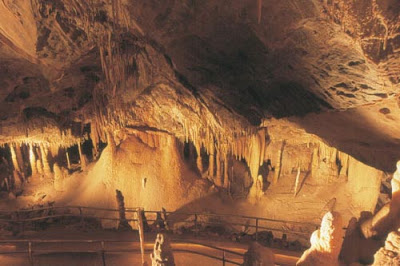 Soldiers at Fort Huachuca
Soldiers at Fort HuachucaThe second day in Sierra Vista, Arizona, I visited the historical museums on Fort Huachuca with Tara and her mother. Fort Huchuca is located about an hour south of Tucson, Arizona, in Cochise County. Tara's dad recently obtained a job on the base with regards to military intelligence.
Histroy: In Fubruary of 1877,Colonel August Kautz ordered a camp to be established to protect settlers and travel routes in southern Arizona. It was also established to block Apache Indian escape routes into Arizona. The Apaches were a violent Indian tribe who killed soldiers and settlers throuhout the southwest. In 1886 General Miles used the fort as its headquarters and supply base in support for the campaign against the renegade Apacher leader Geronimo and his followers. Later in the year Geronimo surrendered in southern Arizona with the Mexican army blocking his escape route to the south and the U.S. Army to the north. The U.S. Army duped Geronimo into surrendering by claiming he and his followers would have freedom if they gave themselves up. However, the US incarcerated them for decades as prisoners of war. Fort Huachuca stayed open after the Apache wars because of persistent banditry and American outlaws.
The 10th Calvary "Buffalo Soldiers" arrived at Fort Huachuca in 1913 and stayed for 20 years. The 10th Calvary was composed of all African troops. Up until the 1950s African Americans could not serve with whites. As a result, they had their own regiments. These black soldiers became known as "Buffalo Soldiers," a name given to them by indians. The 10th Calvary joined Pershing in a 1916 expedition into Mexico to find and capture Pancho Villa- a mexican outlaw wanted for burning a New Mexico town. During World War II the 25th Infantry Division who were stationed in Arizona fought alongside the French in the European Theatre. Many of these soldiers fought with valor but were not recognized for decades.
After the Korean War Fort Huachuca became a part of the Army Strategic Communications Command. Under this command the Fort became instrumental in the testing of electronic and communications equipment. This would include the testing of drone technology. During the Cold war the base became the home of the U.S. Army Intelligence Center and School. As a result, many of the activities on base are classified. (Information from www.huahuca.army.mil/site/vistor/index
 "Buffalo Soldier"
"Buffalo Soldier"
 Statue honoring the "Buffalo Soldiers"
Statue honoring the "Buffalo Soldiers" A tribute to the Indian scout
A tribute to the Indian scout
 Desert vegetation in park; near crest of Huachucas
Desert vegetation in park; near crest of Huachucas Pic of park from Crest Trail
Pic of park from Crest Trail Looking east from Coronado peak
Looking east from Coronado peak
 Looking SW along the Huachuca Mountains
Looking SW along the Huachuca Mountains Ridgeline into Mexico
Ridgeline into Mexico
 Inside the Big Room
Inside the Big Room
 Kartchner Cavens State Park; notice the many different species of plants including agaves, ocotillo, yucca.
Kartchner Cavens State Park; notice the many different species of plants including agaves, ocotillo, yucca.









